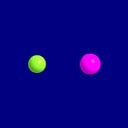What is activating groups-explain with examples?
Activating groups explanation with an example
Activating groups are those groups which increase the density of electron of benzene ring due to their positive inductive effect and resonance effect.
Since these type of groups increase the electron density of benzene ring,
that is, activate the benzene ring, hence they are called activator enhancer or activating group.
So, due to presence of activating group, the benzene ring becomes more activate towards electrophilic substitution reaction.
For example, phenol with — OH activatinggroup under goes electrophilic substitution reaction more easily than benzene.
The central atom of activating group which directly attached to the benzene ring, contain one or more lone pair of electron.
So, due to their +R effect, they increase electron density basically, on the ortho and para carbon atom in the benzene ring. Hence, activating groups are also called ortho and para directing groups.
Now, due to presence of activating group, the electrophile attack the benzene ring easily than unsubstituted benzene ring to form a ‘σ ‘- complex.
Activating groups list or examples.
There are three types of activating groups, namely, strong activating groups, medium activating groups and weak activating groups.
A short list of these three types of activating groups are shown below.

Why is phenol more active than benzene towards electrophilic reaction ?
The –OH group of phenol is an activating group. It increase the density of electron in benzene ring due to its +R effect.
So, benzene ring of phenol becomes more electron rich than benzene ring without any activating group.

Hence, phenol is more active than benzene towards electrophilic substitution reaction. The resonating structure of phenol molecule is shown above.
Why are halogens ortho and para directing group, in spite of deactivating in nature ?
Halogens are deactivating in nature . In spite of this, they are ortho and para directing group .
This can be explained on the basis of two factors, namely, inductive effect and mesomericeffect[ M effect ].
Halogen atom deactivate the benzene ring due to its –I effect and activate the benzene ring due to its +M or resonance effect .
Now , in case of halogen atoms , — I effect is more effective than +M effect .So, halo benzene should be inert in electro-philic substitution reaction.
But in practice, halo benzene undergoes electro-philicsubstitution reaction in ortho and para position.
Because, due to –I effect, halogens attract electron charge from all position of benzene ring.
But, due to +M effect, it increase the electron density basically, on ortho and para carbon atom only.

Now , most of the substitution reaction of benzene, halo benzene or other benzenoid compounds occurs by the attack of an electrophile.
Hence, the substitution halo benzene occurs in ortho and para position only.
Consequently, in spite of deactivating in nature, halogens are ortho and para directing group .

- Activating groups in organic chemistry ?
- Activating groups examples in chemistry.
- Why is phenol more active than benzene towards electrophilic reaction ?
- Why are halogens ortho and para directing group, in spite of deactivating in nature ?
